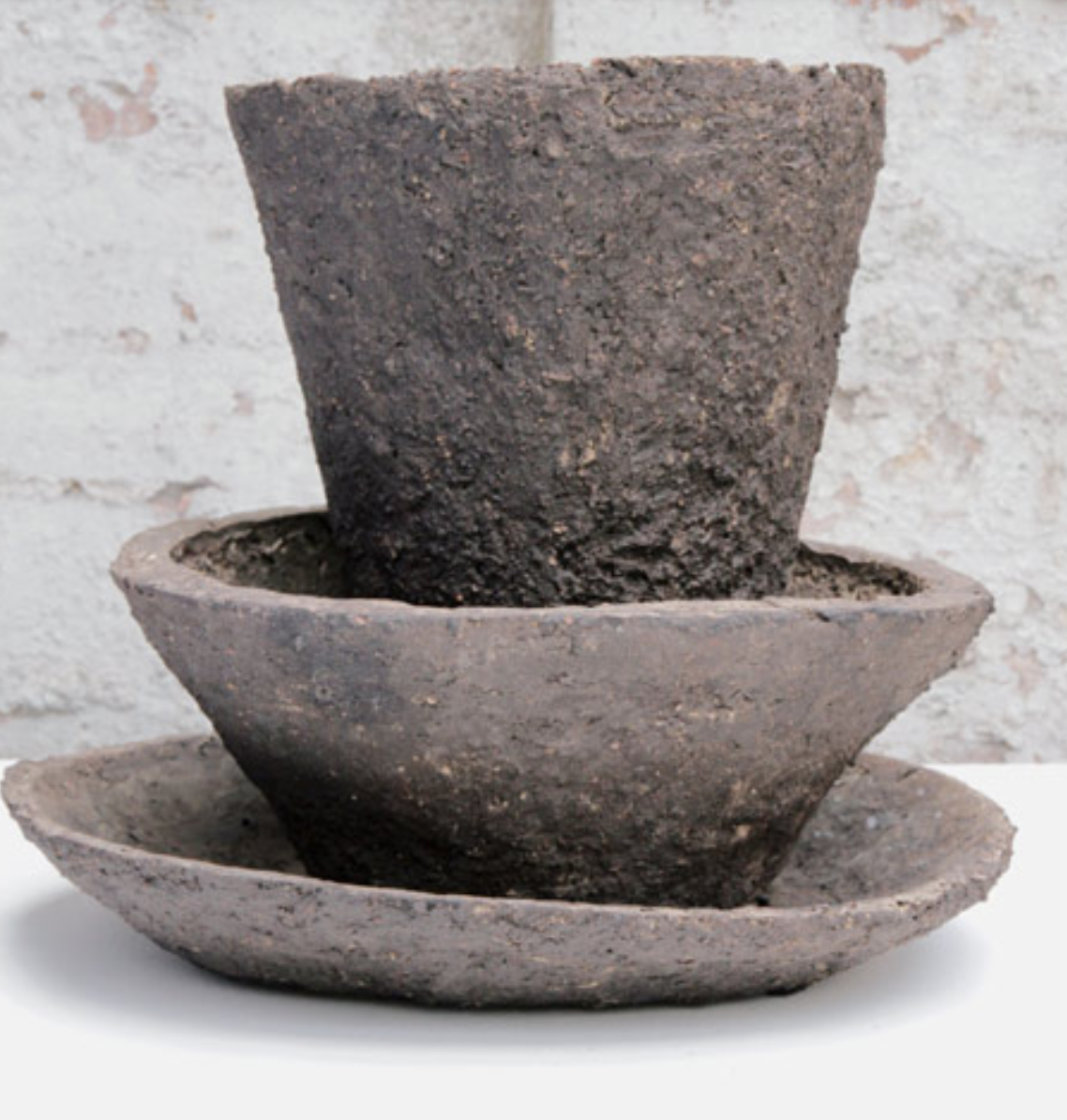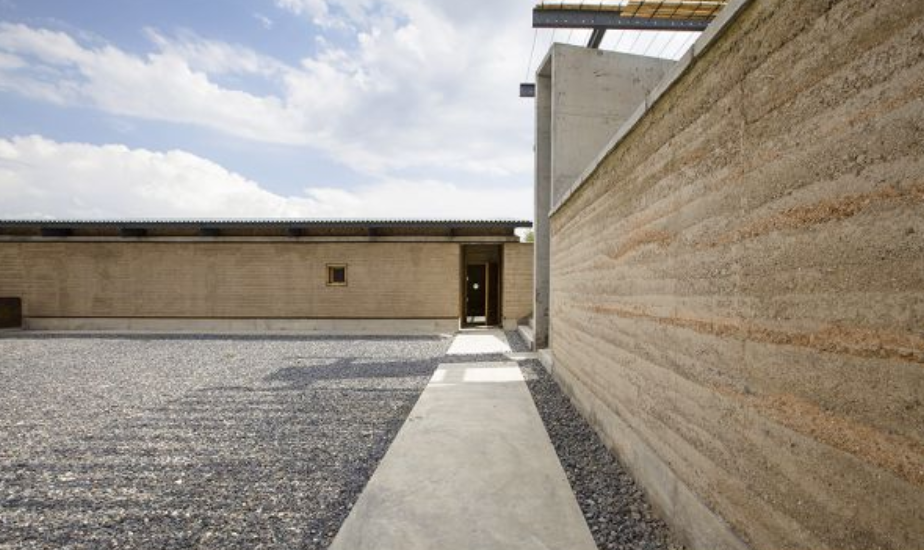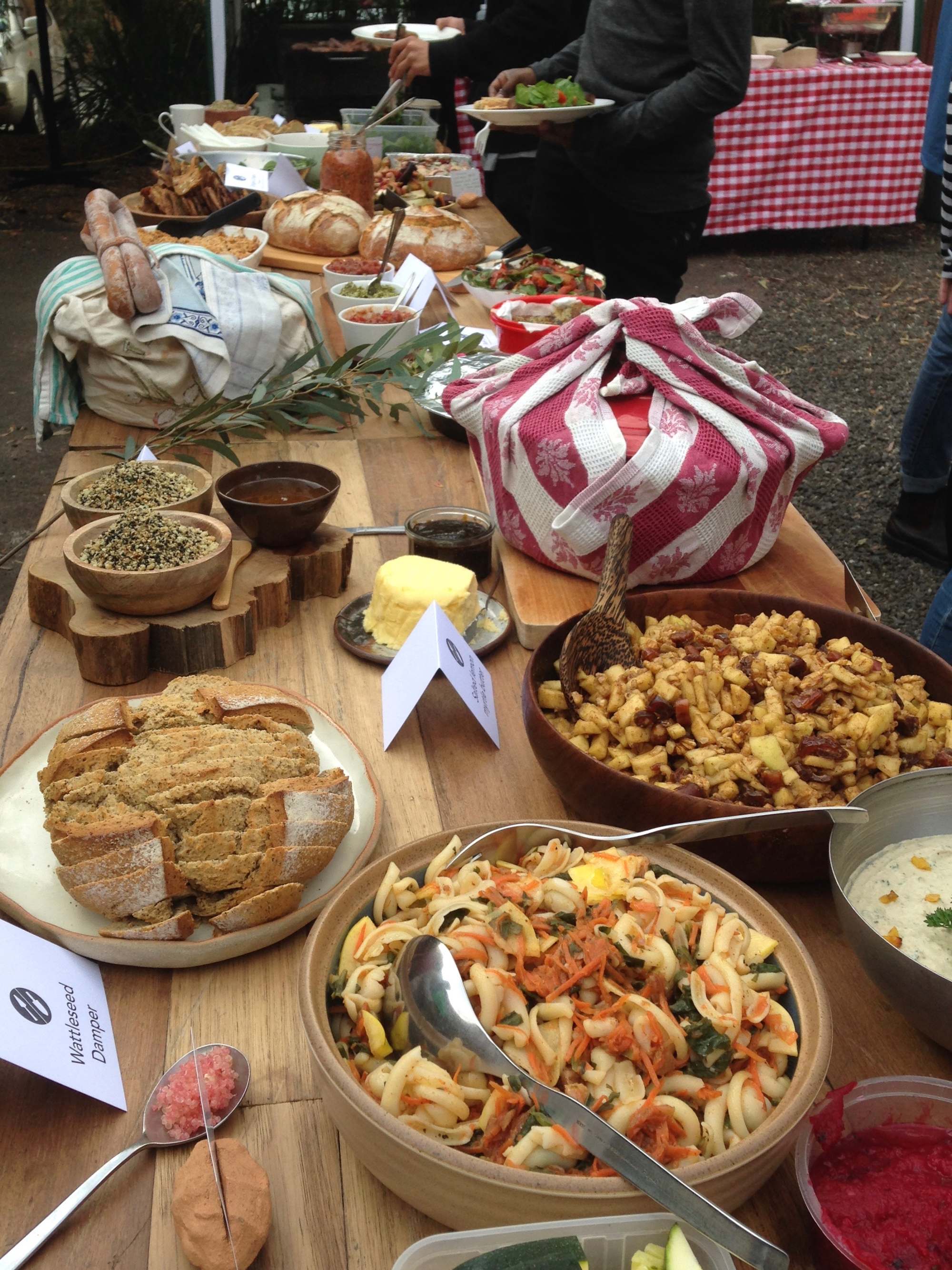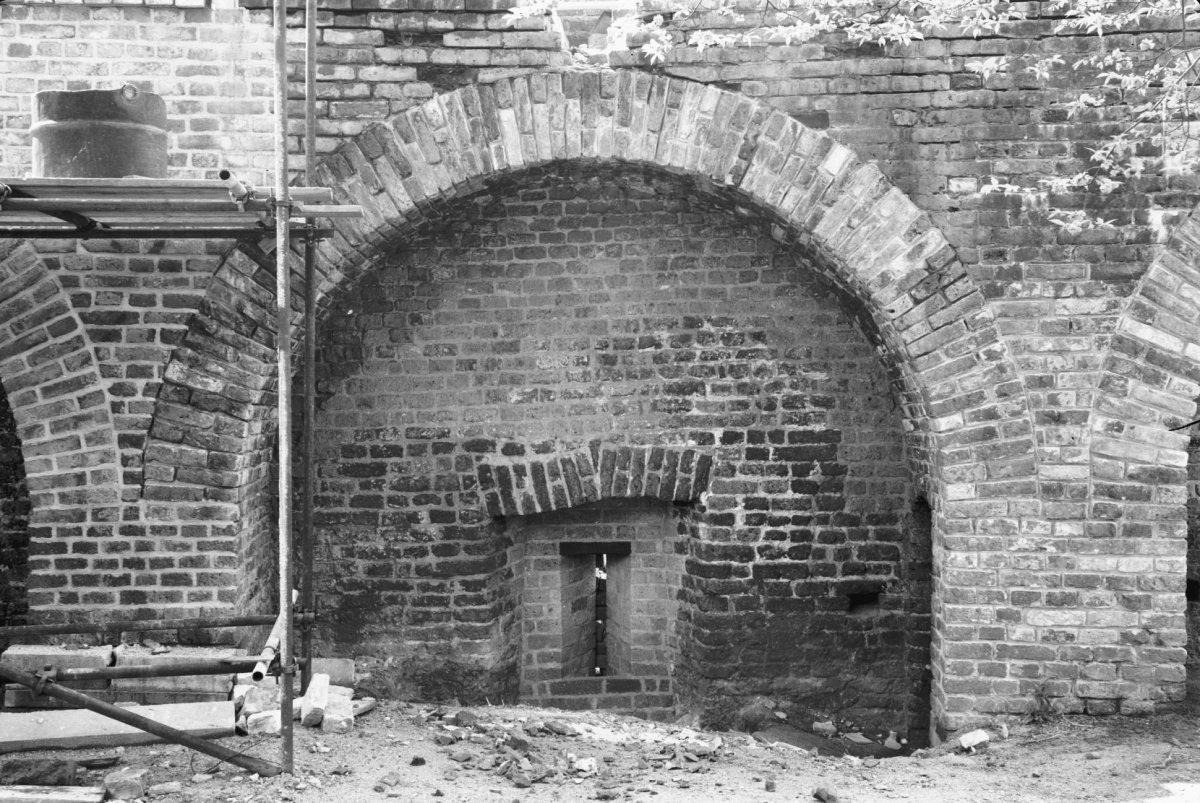Research | Reference projects
Swedish artist Hilda Hellström created food storage jars made of radioactive earth from the Fukushima Daiichi nuclear disaster area in Japan. To do so, she contacted the last person still living inside the evacuation zone, Naoto Matsumura, and collected soil from his rice fields that can’t be farmed due to contamination.
Emerging Objects explores the frontiers of technology and material using traditional materials (clay, water, and wheat straw), to push the boundaries of sustainable and ecological construction in a two phase project that explores traditional clay craft at the scale of architecture and pottery. The end goal of this endeavor is to demonstrate that low-cost and low-labor construction that is accessible, economical and safe is possible.
The Macha Village Center, designed by One Earth Architecture
Construction with earthen materials, as one of the oldest traditional technology, was widely employed all over China during the past thousands of years. According to the latest statistics, at least 60 million people in China are still living in various traditional rammed-earth dwellings, most of which are located in poor and rural regions.
The Macha Village Center, designed by One Earth Architecture, is located in Huining County, Gansu Province, borrows the conventional yard form and local building traditions of the region to create a courtyard that is enclosed by four different height of earth buildings that faces the eastern valley. Al building materials and earth are taken from the local area to blend in the local landscape in a natural way.


Kate Hill works with natural materials, and has a specifi focus on clay. She does lots of field research to explore the material.
Left: Series of hand dug clay bowls and platters sourced from different parts of Victoria, to hold Indigenous and foraged foods for a community feast in North Melbourne.

Origins:
Soil used in (ancient) architecture - From the Architectural Review
Traditional and contemporary art of raw earth construction are both absent from even the most recent books on architecture, disregarding its due importance, and its true diversity, quality and modernity. Used continuously for millenia in most of the world, raw earth remains one of the most popular construction materials. Earth allows both treatments: 'raw' and 'baked'. The oldest, still widely adopted in many countries, uses solar heat to dry and harden earth, unlike bakes bricks or tiles which require much higher temperatures. Raw earth has many virtues and advantages, in particular in terms of energy-saving and ecology.
Raw earth does not require a phase of industrial processing and needs little or no transportation, as it is used on or near its place of extraction. Its use does not require fossil fuels and does not produce CO2. If used, as often advised, without cement or any other industrial additive, earth is a fully recyclable material.
Building with raw earth adheres as much to productivist logic as it does to self-help construction allowing modest families and communities to realize on of their most essential hopes and needs: pleasant, healthy, economical, and sustainable housing. It is a major contribution to social wellbeing, especially as it proves compatible - today and historically - with the expectations of all social classes, from the most affluent to the most deprived.
It all started 10,000 years ago, during the 'Neolithic Revolution', which heralded teh transition from nomadism to the first human settlements. The agricultural surplus economy of the early villages les to the creation of the first cities. If Anatolia hosted, from 7560 BCE, the most ancient proto-city - Çatal Hüyük - it was in Mesopotamia, on the Fertile Crescent (Iraq and Syria), that the first great urban civilisation appeared and grew. To build its numerous agglomerations - sometimes already enlarged to the status of metropolises like Babylon - and given the scarcity of stone and wood in those regions, raw earth was the predominant material. It was used to build not only most homes, but also fortified defensive walls, palaces and temples, and in particular ziggurats, whose ascending architectural impulses had to ensure a mystical connection between men and gods, between earth and sky.
Source: The Architectural Review
Benefits of using soil:
- Natural element, thus can be analogous to the primary nature and attributes of Man
- Environmentally friendly application
- Low mechanical ability of soil
- Durability and sustenance
- Insulating capability against heat and cold
- Contributes to man's physical and spiritual health
- Save energy in a building
Source:
The role of soil in architecture (Mohsen Vafamehr, 2017)
There are several hypotheses. Possibly, in the 12th century, monks and traveling merchants from the Mediterranian sea area introduced the first bricks. For sure the trade increased during this century. There was a polycentric development of brick making: which means that, during the same time, bricks were invented at several different places. The first buildings in the Netherlands built from bricks were cloisters. The high nobility were the first to use bricks. Using bricks used to be a status symbol, and was for the rich only for a long time.
Source:
https://www.bouwhistorie.nl/sites/default/files/VroegebaksteeninHollandtot1300.pdf
Bricks are more eco-friendly than concrete stones. Using bricks results in less CO2 pollution, and they don't have to be replaced as much. Researchers compared bricks VS concrete on:
- production
- transport
- construction & maintenance
- demolition & possible reuse of materials
Bricks can be reused/recycled quite well.
Using bricks instead of concrete saves 237.000.000 CO2 per 100 years for the Amsterdam pavement. Though this sounds promising, we should still realise a 1000 bricks still cause 130,1 kg CO2 emissions. It takes a lot of energy to produce bricks. Circa 40% of the waste produced in Holland is construction waste.
Bricks don't isolate well. For this, you need a cavity wall.
Voor het isoleren van spouwmuren in de nieuwbouw worden isolatieplaten en folies toegepast. Hiervoor worden materialen zoals steenwol, glaswol, geëxpandeerd polystyreen (EPS), geëxtrudeerd polystyreen (XPS), polyurethaan (PUR), resolhardschuim (PF) of polyisocyanuraat (PIR) gebruikt.
Source:
https://www.trouw.nl/duurzaamheid-natuur/baksteen-is-groener-dan-beton~b6ac0291/

Bricks | Durability focused projects
Architectural duo Architectuur Maken built a house in Rotterdam. They used a small 'rest space' in between other buildings. Their goal was to design while focusing on sustainability. They did this by building only the necessary walls, and so using minimal materials. For the exterior, they used the bricks from StoneCycling.
https://architectuurmaken.nl/projecten/zelfbouw-rotterdam/
StoneCycling creates WasteBasedBricks, which are bricks produced from rest material (e.g. waste glass, toilets, sinks, old bricks, old concrete). They use upcycling to add more value to a product. They produce high quality products which can be used for interiors and exteriors of buildings.
https://www.stonecycling.com/
Project 'zelf bouwen' in Rotterdam
WasteBasedBricks
History of bricks (in the Netherlands)
Durability of bricks
Kate Hill
Emerging Objects
The Macha Village Center
Hilda Hellström
Bricks | history, durability
Smart bricks capable of recycling wastewater and generating electricity from sunlight are being developed by a team of scientists from the University of the West of England (UWE Bristol). The bricks will be able to fit together and create 'bioreactor walls' which could then be incorporated in housing, public building and office spaces.
The smart living bricks will be made from bio-reactors filled with microbial cells and algae. Designed to self-adapt to changing environmental conditions the smart bricks will monitor and modify air in the building and recognise occupants.
https://info.uwe.ac.uk/news/uwenews/news.aspx?id=3428
Smart bricks
Tom van Soest looks for common materials and translates them into something more valuable. Something that inspires me.
The Smart Bricks are good examples of connecting nature with design. Using biobased materials results into more advanced technologies
Architects using the StoneCycling bricks
Home
These blue parts are:
Personal annotations
Soil | history in (ancient) Architecture
Raw earth offers architects the potential for action on our essential civic and ethical duty to fight against the climate crisis.
The first raw earth was used in architecture during the Neolithic Revolution (10,000 years ago)